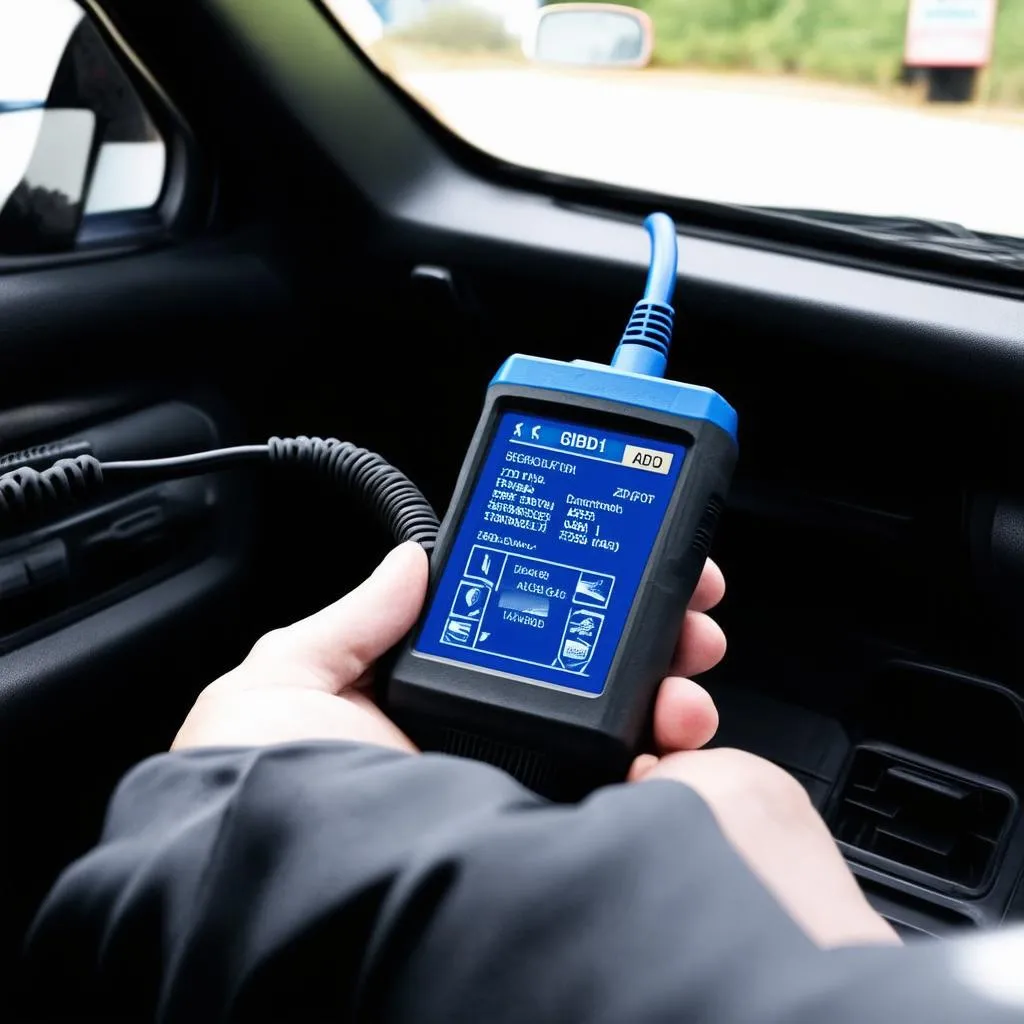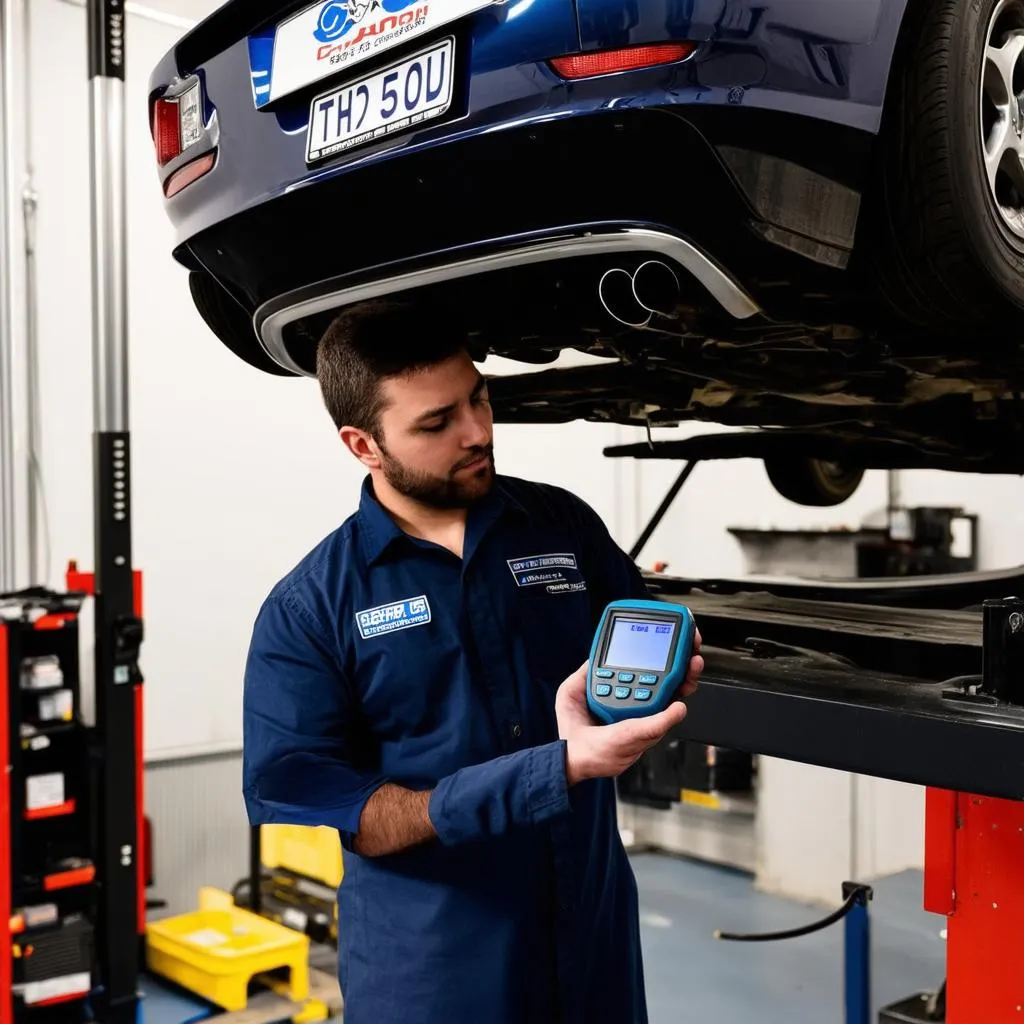Imagine this: you’re driving down the Pacific Coast Highway, California, top down, wind in your hair, when suddenly – bam! Your check engine light flashes on. Frustrating, right? But before you pull over in a panic, what if you had a tool to decipher that cryptic warning light? That’s where an OBD-II fault code reference guide comes in handy.
Decoding the Mystery: What is an OBD-II Fault Code Reference Guide?
To a mechanic, those blinking lights on an OBD-II scanner are like a conversation starter, revealing what’s going on within your car’s intricate systems. For the average driver, however, it’s a different story. That’s where an OBD-II fault code reference guide swoops in to save the day!
From a mechanic’s perspective:
Think of a fault code reference guide as a Rosetta Stone for your car’s computer. It translates those complex codes (like P0301, for instance) into plain English, telling you exactly where the problem lies. Is it a misfire in cylinder 1? A faulty oxygen sensor? The guide will tell you!
From a technical standpoint:
Each code in the guide corresponds to a specific malfunction detected by your car’s onboard diagnostics system (OBD-II). This system monitors various components related to emissions, engine performance, and more.
Economically speaking:
Having a guide can save you a significant amount of money in the long run. Instead of rushing to a mechanic for every little hiccup, you can diagnose minor issues yourself and decide if a professional is really necessary.
Finding Your Guide: Downloading and Understanding the Information
“Where do I download one of these magical guides?” you ask. Easy! Several reputable websites offer free downloads. Just be sure to choose one that’s specific to your car’s make, model, and year.
Here’s how to use it:
- Locate your OBD-II port. It’s usually found under the driver’s side dashboard.
- Connect your OBD-II scanner.
- Turn on the ignition (but don’t start the engine).
- Retrieve the fault code(s) displayed on your scanner.
- Refer to your downloaded guide. Each code will have a detailed description of the problem, possible causes, and even suggested repair procedures.
 OBD-II Scanner plugged into a car's OBD port
OBD-II Scanner plugged into a car's OBD port
Common Questions About OBD-II Fault Code Reference Guides
Let’s address some frequent queries about these handy guides:
1. Are these guides universal?
Not exactly. While the OBD-II system is standardized across most cars manufactured after 1996, some manufacturers use slight variations in their coding. It’s always best to opt for a guide specific to your vehicle for the most accurate information.
2. Can I rely solely on the guide for repairs?
While the guide provides a starting point for understanding the problem, it shouldn’t be your only resource. Car repair can be complex, and some issues might require professional expertise.
3. What if my car doesn’t have an OBD-II port?
Cars manufactured before 1996 might use an older OBD system (OBD-I) or have manufacturer-specific diagnostic connectors. You’ll need to consult your car’s manual or a trusted mechanic for guidance in these cases.
Beyond the Codes: Additional Resources for Car Owners
Here are a few other avenues for car owners seeking information and assistance:
- Online forums: Websites and forums dedicated to your car’s make and model can be treasure troves of information.
- Repair manuals: Investing in a comprehensive repair manual for your car can provide invaluable insights for DIY enthusiasts.
- Professional mechanics: Don’t hesitate to seek professional help when needed.
 Mechanic using an OBD-II Scanner to diagnose car problems
Mechanic using an OBD-II Scanner to diagnose car problems
Need Help with Your Car’s Diagnostics? We’re Just a Message Away!
Feeling overwhelmed by those cryptic codes? Don’t worry; we’re here to help! At Tech Car USA, our team of expert mechanics is available 24/7 to assist you with all your car diagnostic needs. Whether you’re struggling to understand a specific fault code or need help installing diagnostic software, we’ve got you covered.
Contact us via WhatsApp at +84767531508 for immediate assistance. We’re passionate about helping car owners like you take control of their vehicle’s health and keep their rides running smoothly.
Looking for more insightful articles about car maintenance and technology? Check out our other informative posts on OBD software for laptops, OBD apps for Mercedes-Benz, free Android OBD apps, the best free OBD scanner apps, and BT1A OBD adapters.
Remember, a little knowledge about your car goes a long way. Embrace the power of OBD-II fault code reference guides and embark on your journey toward becoming a more informed and empowered car owner!